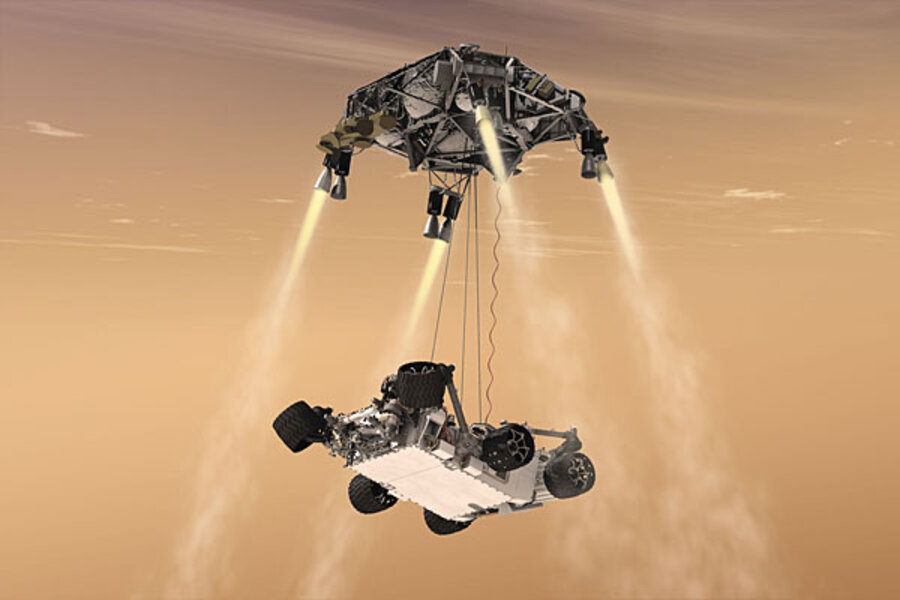Will NASA's Mars rover crash?
Loading...
| Farnborough, England
So far, the scorecard for missions to Mars reads attempts 40, successes 14.
Not so good.
Well over 60 percent of Earth missions to Mars have failed, ever since the pioneering efforts of the former Soviet Union in the 1960s and including Britain's high-profile Beagle 2 space probe.
As NASA's latest mission to Mars heads closer to the Red Planet, the head of NASA's Mars Exploration Program, Doug McCuistion, acknowledged Tuesday that many things could still go wrong before its scheduled Aug. 6 landing date.
The one thing that worries him most is if the spacecraft's heat shield will detach as planned when the U.S. Mars Science Laboratory mission sets down a large, mobile laboratory on Mars — the rover Curiosity.
"If you look at the scorecard, Earth is doing less than 50 percent; less than 50 percent of Earth's missions to Mars have been successful," McCuistion, a former U.S. fighter pilot, said at the Farnborough Airshow south of London.
In the seven minutes before its planned touchdown, the U.S. spacecraft has a number of tasks it has to complete for Curiosity to make a safe landing. First it must get rid of the heat shield and avoid a subsequent collision with it. Then it has to slow its descent to the Red Planet with the aid of a massive parachute as well as use rockets mounted around the rim of an upper stage. In the final seconds, the upper stage of the spacecraft acts as a sky crane, lowering the upright rover on a tether to the surface.
In spite of the challenges, McCuistion remains positive that the $2.5 billion mission will be a success and praises the unprecedented international cooperation between NASA and companies like German electronics company Siemens AG.
After all, NASA, the world's biggest space agency, enjoyed success with its twin Mars Exploration Rovers in the mid-2000s.
"I can't really give you a hard number .... but I think we are in a medium-to-low risk environment," McCuistion said.
After spending eight months travelling to Mars, Curiosity will spend 23 months analyzing dozens of samples drilled from rocks or scooped from the ground as it explores Mars with greater range than any previous rover.
Mars missions all share the same ultimate goal: Seeing whether Earth's nearest planetary neighbor can sustain life. President Barack Obama has set a goal of the 2030s for a manned mission to Mars, but with budgetary constraints, NASA faces a tough task defending its current $18 billion annual budget.
NASA is hoping a scorecard of 15 successful trips to Mars will help in that task.







